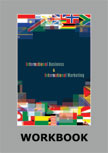Wind Energy Industry in the US and Canada: A Note on the Regulatory
Environment




|
|
ICMR HOME | Case Studies Collection
Case Details:
Case Code : BENV007
Case Length : 08 Pages
Period : 2003-2006
Pub Date : 2006
Teaching Note :Not Available
Organization : Microsoft
Industry : Alternative Energy
Countries : USA, Canada
To download Wind Energy Industry in the US and Canada: A Note on the
Regulatory Environment case study
(Case Code: BENV007) click on the button below, and select the case from the list of available cases:

Price:
For delivery in electronic format: Rs. 300;
For delivery through courier (within India): Rs. 300 + Rs. 25 for Shipping & Handling Charges
»
Business Environment Case Studies
»
Business Environment Short Case Studies
» View Detailed Pricing Info
» How To Order This Case
» Business Case Studies
Please note:
This case study was compiled from published sources, and is intended to be used as a basis for class discussion. It is not intended to illustrate either effective or ineffective handling of a management situation. Nor is it a primary information source.
|
|
<< Previous
Excerpts
Regulatory Environment
|
Regulatory environment plays a vital role in nurturing the wind energy sector.
The US government initiated the advanced energy initiative (Refer to box item
for a note on the Advanced Energy Initiative in the US) for funding development
of cleaner, cheaper, and more reliable alternative energy sources. Renewable
portfolio standards in the US mandate an increase in the supply of power from
various renewable sources of energy. Policies such as the production tax credit
in the US and wind power production incentives in Canada increase the
attractiveness of the wind energy sector as an investment option. Incentive
systems such as feed-in tariffs for suppliers of green power and net metering
for power consumers encourage decentralized investments in wind power
generation.
|
|
Renewables Portfolio Standards in the US
Federal renewables portfolio standards (RPS) make it mandatory for all power
suppliers in the US to include green power as a portion (greater than or
equal to a specified minimum percentage) of their total power supply.
Renewable Energy Credits (REC) are essential to the functioning of the RPS.
According to the American Wind Energy Association (AWEA), an REC is a
tradable certificate of proof that one kWh of electricity has been generated
by a renewable-fueled source...
|
|
Future Outlook
Incentive systems will continue to play a vital role in increasing wind
power generation capacity in both the US and Canada until the cost of
generating wind power becomes competitive with respect to conventional
power. The production tax credit policy in the United States expires in
December 2007. Analysts opine that if the production tax credit is not
extended before it expires it may ultimately lead to an increase in the
cost of wind power. However, if the production tax credit policy is
extended well before it expires, wind energy capacity additions are
projected to result in a significant growth in the North American wind
energy market... |
Exhibits
Exhibit I: Offshore Wind Energy in the US: Opportunities and Constraints
|
|



